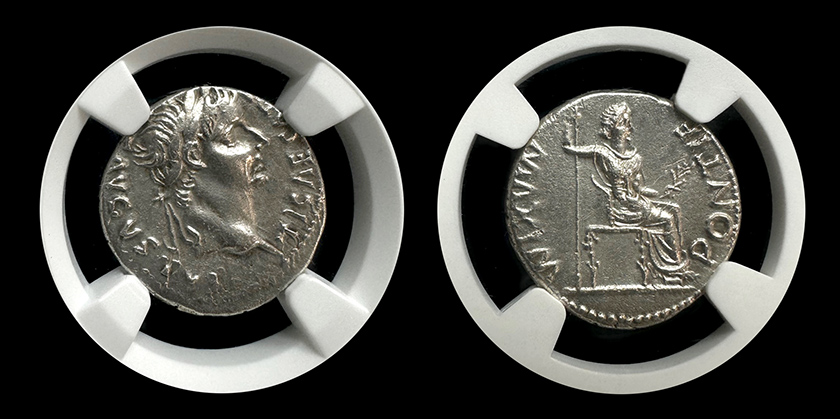During the time when Jesus Christ was in Rome, the Roman Empire was under the rule of Emperor Tiberius. Tiberius issued a Tribute Penny during his reign. In fact, the Tribute Penny has become significant not just in Roman history, but in religious history as well.
The Tribute Penny was a silver coin that was used to pay the annual tribute imposed on the Jews by the Romans. It featured an image of Tiberius on the obverse side, and the inscription “Tiberius Caesar Divi Augusti Filius Augustus.” Moreover, this translates to “Tiberius Caesar, Son of the Divine Augustus.” On the reverse side is a seated female figure, commonly believed to be the goddess Pax, the personification of peace in Roman mythology. However, some historians believe that the seated female figure is a depiction of Tiberius’ mother, Livia Drusilla. This is a subject of debate among scholars, and there is no conclusive evidence to definitively identify the figure.
The significance of the Tribute Penny lies in the account of Jesus Christ in the New Testament of the Bible. According to the Gospel of Matthew, a group of Jewish religious authorities known as the Pharisees sought to catch Jesus by questioning him if paying taxes to Caesar was permissible. Jesus first requested a penny before enquiring as to whose likeness and superscription it bore. He is famed for saying, “Render therefore to Caesar the things which are Caesar’s; and unto God the things which are God’s.” To clarify, in response to their response that it belonged to Caesar.
Historical and religious context of Jesus
The Tribute Penny is a tangible reminder of the historical and religious context of Jesus’ time in Rome. It serves as a reminder of the political and economic structures that were in place during that time. In addition, it reminds us of the tensions that existed between the Jewish people and their Roman occupiers.
Emperor Tiberius was an important figure in Roman history. He ruled as the second Roman emperor during the years of 14 and 37 AD. During his reign, the Roman Empire expanded its territories, and he was known for his military campaigns and conquests. However, he was also known for his tyranny and cruelty, and his reign was marked by political instability and corruption.
In conclusion, the Tribute Penny issued by Emperor Tiberius during the time of Jesus Christ’s presence in Rome is a small but significant artifact. Above all, it served as a reminder of the political and economic structures of the Roman Empire. Consequently, it highlighted the tensions that existed between the Jewish people and their Roman occupiers. It is a testament to the historical and religious context of the time, and a tangible link to the past.


